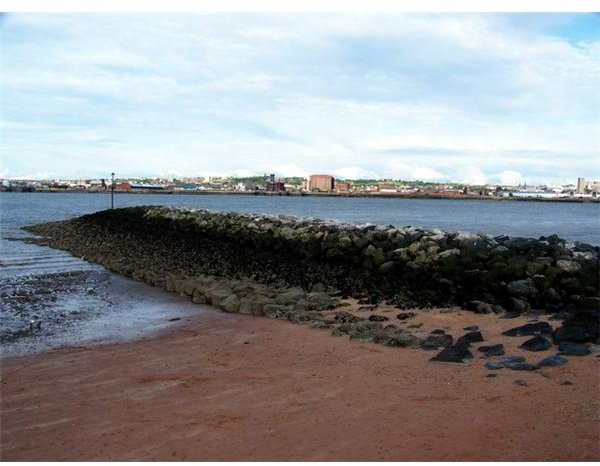Help for Beach Erosion - Engineering Structures
Littoral Drift and the Need for Groynes
Waves and wind are the major factors involved in beach erosion. Littoral drift or longshore drift causes the evolution of a shoreline by changing the sediment on a beach and causes its profile to follow the wind direction and the direction of the backwash from wave action in the surf zone of that beach. It can also be affected by gravity, which will depend on the slopes of the deposits on that particular beach, and be influenced by the size of the particles that are on the stretch of coast. This will work differently for sand and shingle.
Image Source: Wikipedia: Groyne
A groyne is a physical barrier used to stop the transport of sediment caused by littoral or longshore drift. It is essentially a structure which runs at right angles to the shore or seawall and can in some cases remain always submerged. There may be a number of groynes on each beach, with the distance between them being decided by the wind and wave action affecting the particular stretch.
The area between groynes is called the “groyne field,” and these are areas will not be affected by littoral drift in normal circumstances. Groynes can be made of concrete, wood, or piles of rock. They may look unattractive and make the shore line look unnatural, but if they function well, they will preserve the shoreline and beach for years to come. The structure life for rock groynes is unlimited, whereas wooden structures or concrete structures may require some regular maintenance. Groynes ensure upper beach stability and are useful structures for maintaining beaches at sea resorts and other areas which have a lot of tourist traffic.
The Functioning Of Groynes and Their Layout

Groynes are most effective on gravel and shingle beaches, but not so effective on beaches which contain only sand. The lighter nature of sand particles causes them to be carried over the groyne structure in case of waves with high energy or in adverse wind conditions. The groyne traps beach material which is brought to it from wave or wind action. This prevents the shifting of the material thus allowing the beach to maintain its character. Groynes can be outflanked by wave and wind action. This can be prevented to some extent by having a short section which forms a tee at the landward end of the groyne.
Image Source: Wikimedia: Rock Groyne
To be effective, groynes require a height at least half a meter above the anticipated up drift and need to be formed from a level of at least one meter below the lowest anticipated beach level. The groyne width must be formed by rocks or structures which form a slope of 1.5 times in length as compared to the height. This ensures that the groyne will always remain stable and will not be affected by wave action. In plan, a groyne must run from the landward end of the beach down to the water and a little beyond. The tee section at the landward end will prevent outflanking. Rock sizes suggested for effective groynes would weigh between 1 to 3 tons with heavier rock used for exposed areas and other areas more subjected to wave action. Rock groynes are more effective if they are placed with a lot of voids and not packed. Care has to be taken to see that such voids do not lead to users slipping between the rocks.
Groynes need to be built prior to any nourishment plan for a beach and be built in trenches. Groynes built on regular sandy beaches may require that the space between groynes is constantly recycled or nourished, as otherwise upper beaches may tend to get depleted. Groynes perform best on beaches that have a significant proportion of gravel. The space between groynes will actually depend on the wind and wave action in the region, though very close spacing does tend to affect the aesthetics of a beach. Each site where dune erosion does take place because of wave and wind action must be considered independently, and groynes should be made as per these specific requirements. For this a long term monitoring of the beach over several years is the only way to gather sufficient data which will make the design of a groyne field effective.
